This is part 8 of a series that walks through the slides in a pitch deck. See Start With the Problem, and Your Startup’s DNA: The Solution Slide, How Not to Waste Your Product Slide, Why Now: Change is the Key to your Pitch, The Market Size Dilemma, How Not to Lie To Yourself About Competition, and Telling the Story of How You Make Money.
A surprising number of pitch decks have no go to market slide. That’s a mistake because after you’ve found a great market and built a great product, you still need to say how you’ll get the two together. If you build a better mousetrap, will customers beat a path to your door?

The GTM slide is an extension of your business model slide, which showed how the parts of the engine work together to make a profitable business. The go to market slide focuses on channels. That is, sales and marketing channels for how customers learn about you and decide to buy, plus distribution channels for how your product actually gets delivered.
Once your channels are established, you should build up a timeline that shows what go to market tactics you’ll do at what time, including marketing, new product launches, strategic partnerships, etc. Like your product roadmap, this shouldn’t be a detailed project plan. Just show the big things you’ll do, like expanding to a new country or launching a new integration. These inflection points will drive changes to your financials, like increasing revenue.
Investors wants to check that you will have the funding in place to execute your go to market plan. Most people underestimate the costs of getting to market and achieving the volumes of business they are projecting. Don’t make this mistake. It’s ok that you can only afford one or two channels initially, but show that you can expand to others.
Key points I cover:
- Types of GTM channels
- Talking about how your GTM channels grow
- Elements of your GTM slide
- 4 example slides: Front, Canndescent, Aircall, Sendgrid
- Checklist
Subscribe for free to receive weekly posts about pitching, a copy of my ebook Pitching a Leap of Faith, and invites to my Pitch Masterclass.
Types of GTM channels
There are many ways customers can find you and many ways your product can get into their hands. That doesn’t mean it’s easy. Underestimating the costs of acquiring a customer or delivering your product can kill your startup.
Here is a non-exhaustive list of common acquisition and distribution channels, broken down by whether they’re direct or indirect.
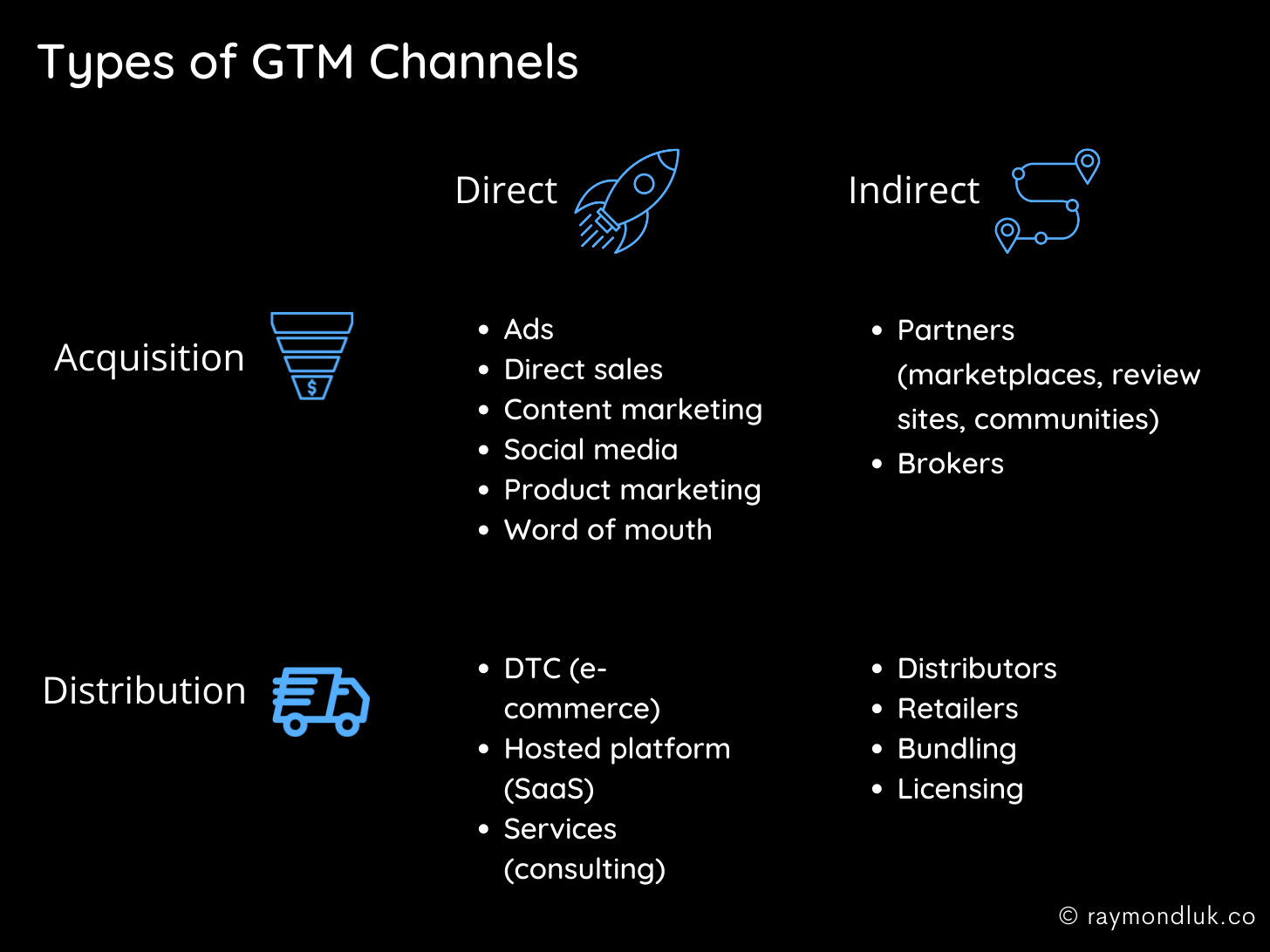
For digital products, your distribution and acquisition channels may be the same. Pick the 2 or 3 key channels that matter to your business and make sure you know the costs. These days there’s no reason not to know the exact costs of digital ads since this information is freely available on Google Search Console.
Do a bottom up analysis of building your direct sales force or closing strategic partners. If you have no idea about costs it’s a good sign you shouldn’t include it in your GTM strategy.
Talking about how your GTM channels grow
For early stage startups especially, you can’t scale up your go to market until you raise money and grow. That means an important part of your go to market story is how you intend to grow over time.
Here are six ways your GTM channels could grow and some hints on how to visualize them:
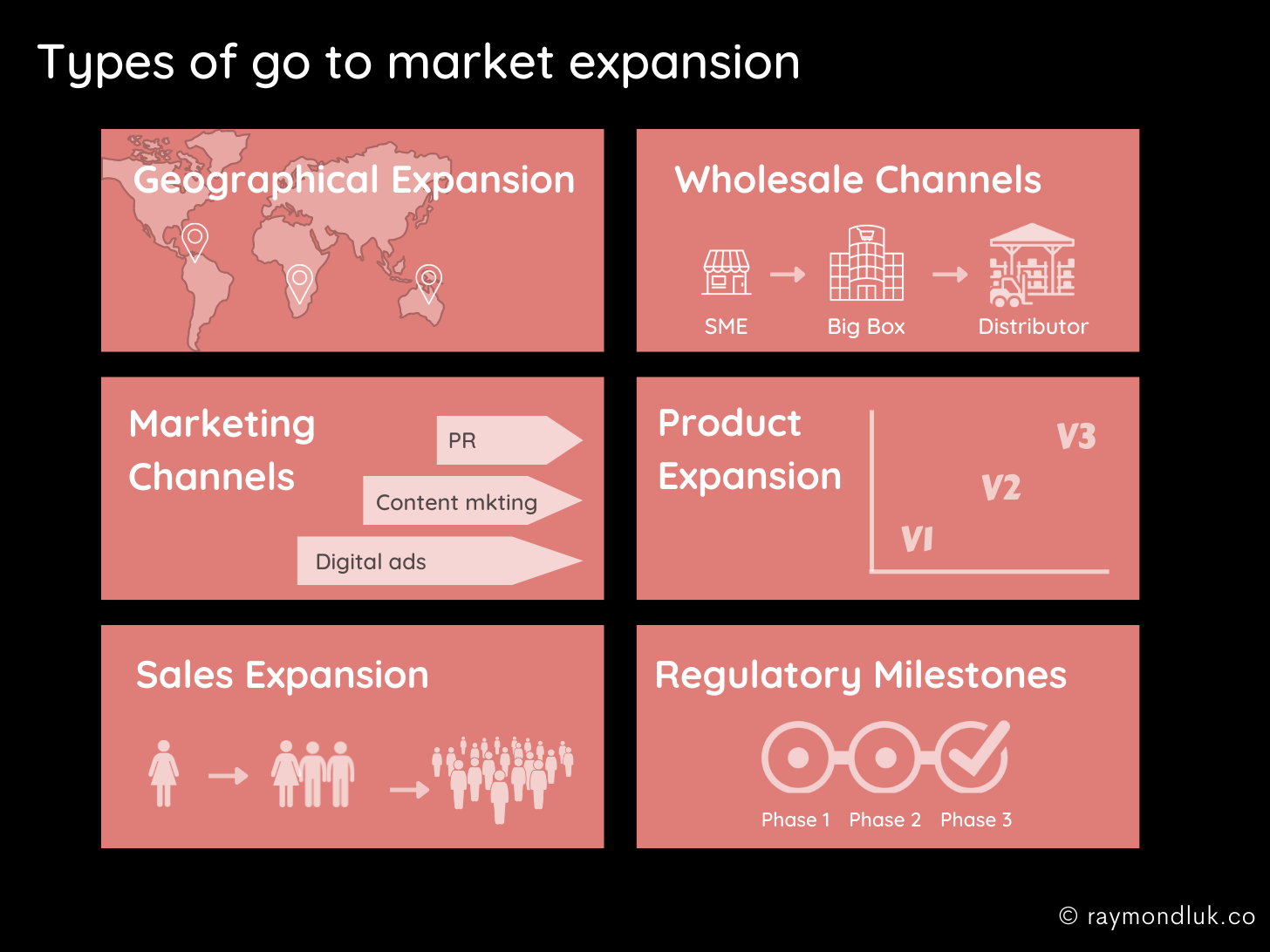
- Geographical expansion - typically starting in one country or region and repeating the process.
- Marketing channels - identifying the key marketing channels you will exploit.
- Sales expansion - how you will scale your sales team, e.g. centralized or decentralized?
- Wholesale - what key retailers or distributors would unlock new markets?
- Product - new features could let you sell to new markets, e.g. internationalizing your UI for a new country.
- Regulatory - in many regulated industries, you cannot market or sell without passing regulatory milestones.
You don’t need a lot of real estate to talk about your GTM roadmap and your visuals don’t need to be complicated. The goal of talking about GTM expansion is to show how you go from MVP to taking a chunk out of a billion dollar market.
Elements of your GTM slide
How you tell your go to market story will obviously depend on your business. But at a high level there are 4 key elements you can choose from:
- Acquisition channels (with unit costs)
- Distribution channels (with unit costs)
- Impact on revenue (usually of all channels)
- Roadmap (eg year 1, 2, 3)
That can be 3 bullets (simple), 9 boxes (for a 3-year plan), or something even more complex. It’s possible, as some of the following examples show.
Examples of Go To Market Slides
Here are four examples of go to market slides from publicly available pitch decks, with some commentary.
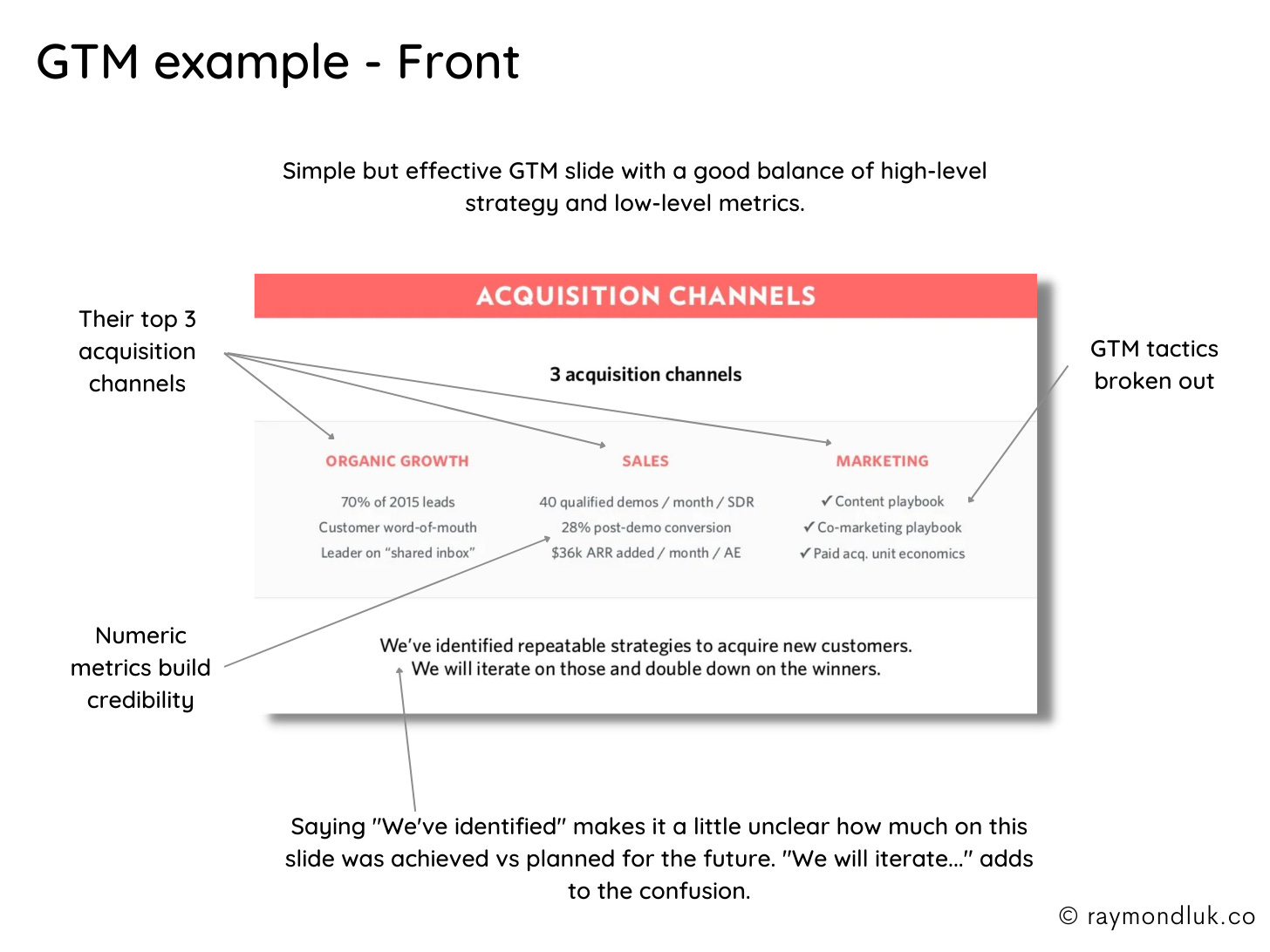
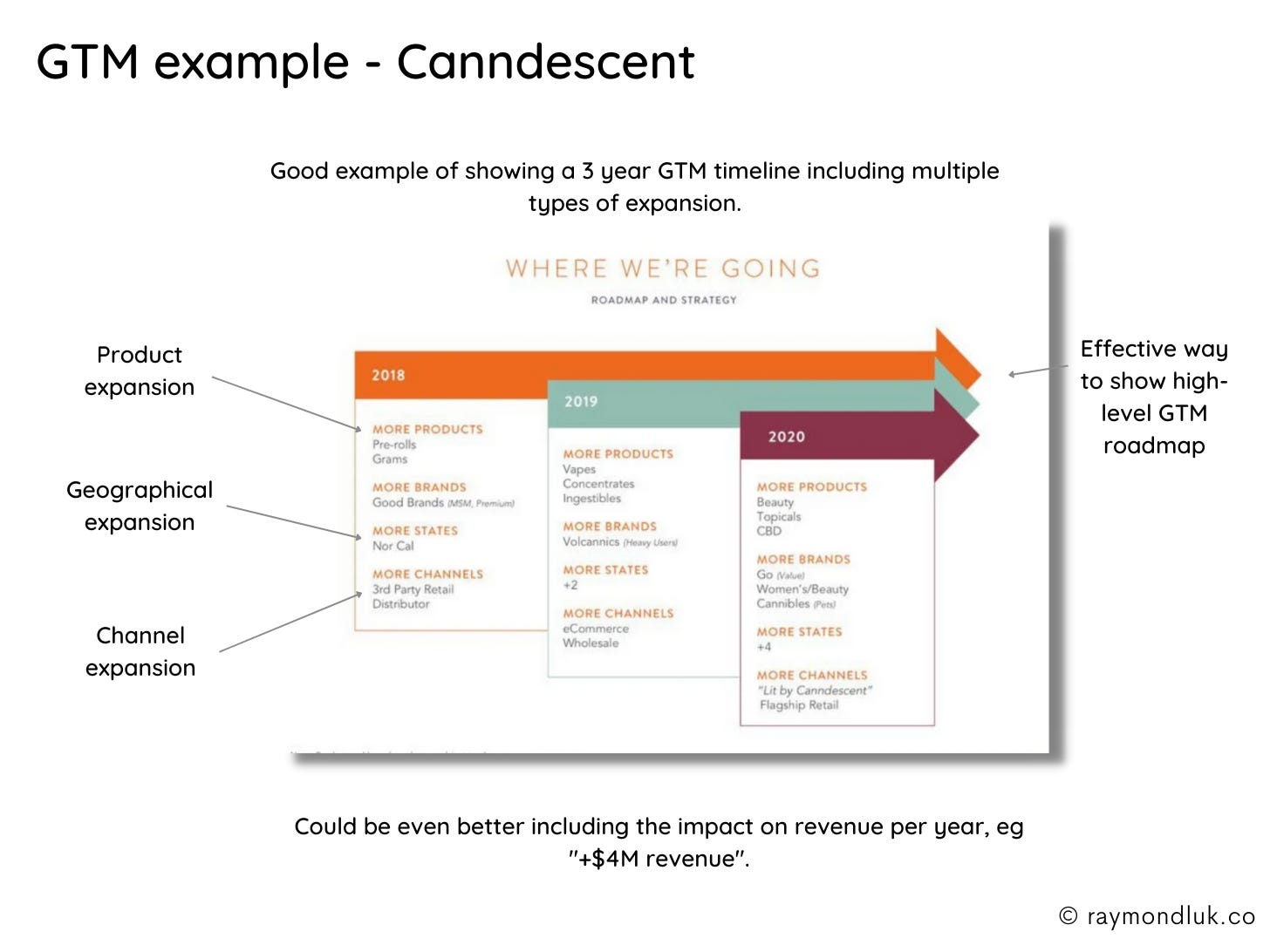
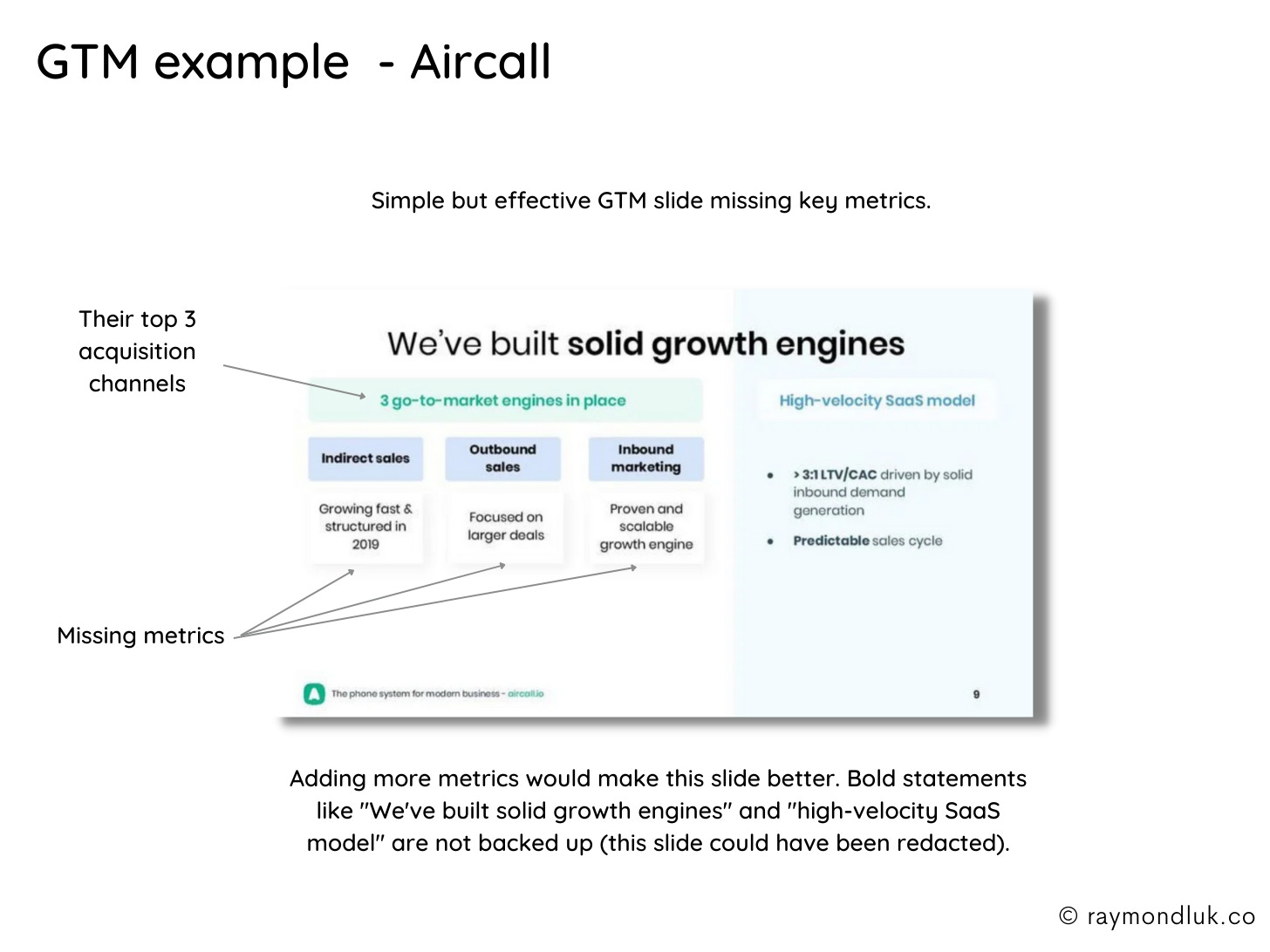
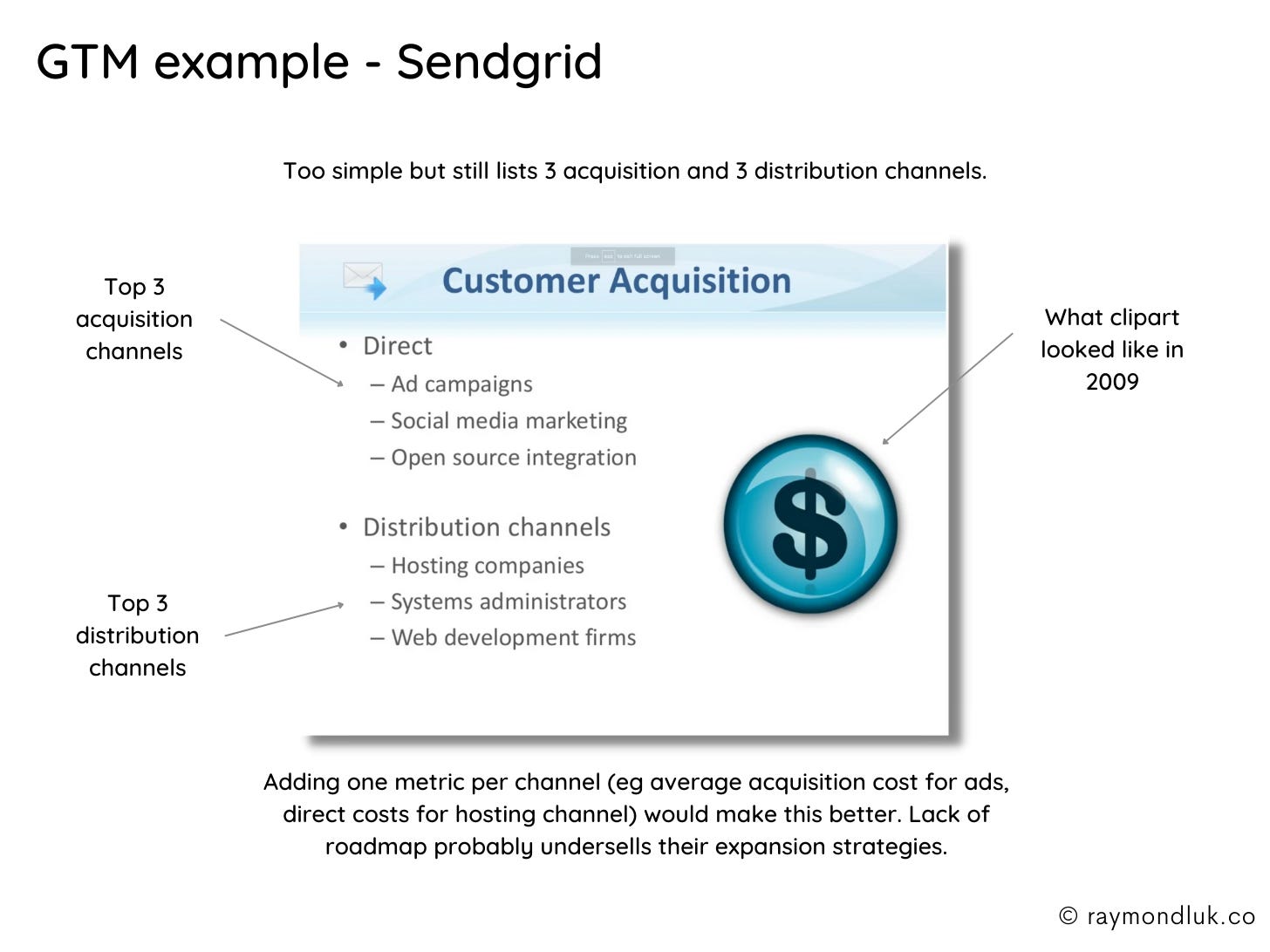
Checklist
Here’s a checklist for evaluating your go to market slide:
- Do you talk about your key acquisition channels?
- Do you talk about your key distribution channels?
- Is there a roadmap for growth?
- Have you included metrics, especially direct costs per channel?
- Do you show how GTM tactics impact your growth?
- Do you have the funding (now or planned) to pay for your GTM?




